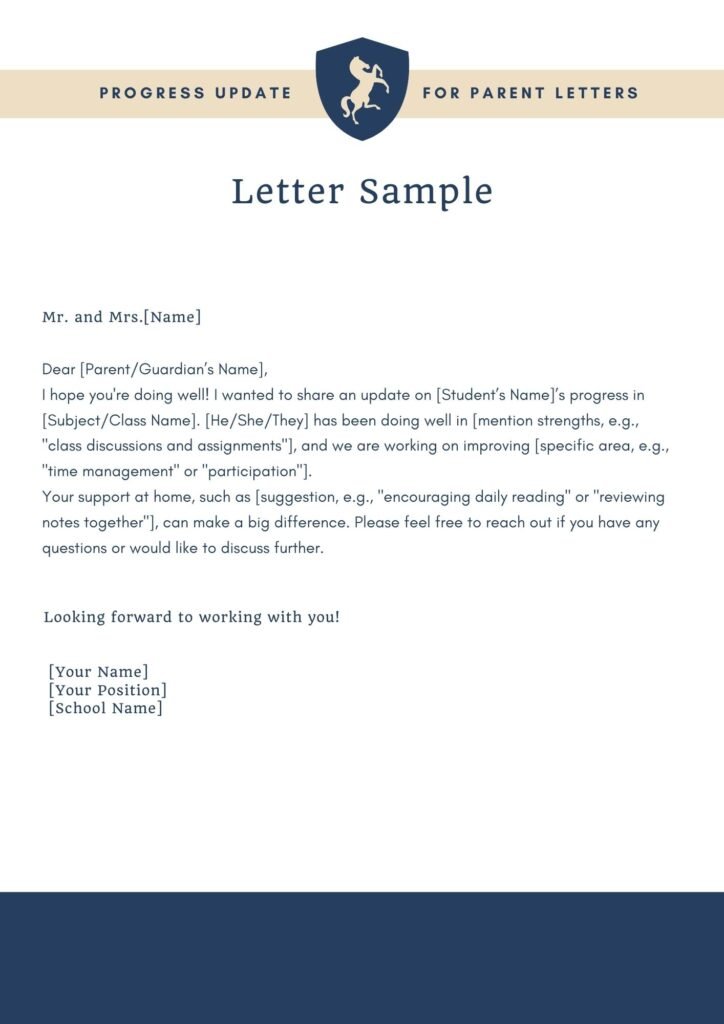Progress Report Parent Letter: Your Child is Crashing Mostly

Imagine your child’s report card is like a roller-coaster rise up, down and sometimes it feels like you are about to fly off the rails. You may feel a mix of guilt and disappointment. Ask yourself did you give them too much screen time? Should I have made them study instead of watching a movie? Don’t worry you are not alone in this ride.
Many parents face similar challenges and it’s okay to feel overwhelmed. In this blog we will present some tips and advice on how best you can support your child through these challenging times. Here are these strategies for setting your child up for success.
Understanding the Situation
Here’s a general guide on how to structure a progress report parent letter
What does “Crashing” Mean in a Progress Report?
When you come across word “Crashing”, it’s like “below expectations” “at risk” or “failing” in a progress report.
Below expectations
This means your child isn’t meeting the standards set for their grade level. They may be struggling with understanding key concepts or skills.
At Risk
It shows your child is in danger of failing behind or not meeting grade level requirements. It’s a warning sign that intervention may be needed soon.
Failing
It means your child isn’t passing the subject or meeting the minimum requirements. This can be concerning as it may impact their overall academic progress. For an in-depth understanding of academic standards, check out this guide on student achievement from the U.S. Department of Education.
Key Elements of an Effective Progress Report Letter
There are following key elements of an effective progress report letter:
Start with Positive
Begin your letter by highlighting your child’s strengths and achievements. This sets a positive tone and ensure parents that their child has valuable qualities. For example, you can mention creativity in art projects or participation in class discussions. Acknowledging these positives can help parents to feel more hopeful and engaged.
Clearly State Concerns
Clearly outline the areas of concerns. Use specific data such as grades and attendance records along with observations. For example, you could write, “Sam’s recent math scores dropped by 20% and he has missed several assignments this month.” This approach provides a basis for the concerns beings raised making it easier for parents to understand the situation.
Provide Context
Always link the struggles to specific causes to give parents a clear picture of the challenges their child is facing. For example, you might say, “We have noticed that Sam has been having difficulty with remote learning which may be contributing to his lower engagement and performance.”
Offer Solutions & Next Steps
Actionable interventions can help support the child’s anxiety for learning. Suggestions include tutoring, scheduling and IEP meeting or recommending counselling services. For example, you may write, “to help Sam improve in math, we suggest weekly tutoring sessions and exploring resources for remote learning support.” These clear steps give parents a path to follow and encourages proactive involvement.
Invite Collaboration
Always conclude the letter by inviting collaboration. Invite parents to a meeting or phone call to discuss their child’s progress in greater depth For example: “we would love to schedule a time to talk with you about Sam’s challenges and take some time to work out a plan for his success.”
This open invitation build a partnership between parents and educators emphasizes that everyone is invested in child’s growth and development.
Phrases to Use and Avoid
Do:
- “We have noticed and want to work together to support your child.” This phrase shows collaboration and proactive approach to address concerns.
- Schedule a meeting to discuss strategies specific to your child. This encourages parents to address their child’s education.
Avoid
- Blaming Language: “Your child isn’t trying.”
This can put parents on defensive and may not be appropriate for handling child’s situation.
- Vague Statements: “They are just not keeping up.”
Such statements lack specificity and can confuse parents about exact issues their child is facing.
Free Progress Report Letter Template Structure
Greetings
Dear [Parent’s Name],
Strengths
I hope this letter reaches you in good health. I would like to take some time to go over some of [child’s name] strengths. [He/She] has been very creative with [specific subject or activity name] and has a good attitude when we discuss things in class. It is a pleasure to have [child’s name] in the classroom.
Areas of Concern
However, I am still a bit concerned about [child name]’s recent progress. As you know, [he/she] has been struggling with [subjects or behaviors] that we need to work on together
Supporting Evidence
For instance, [Child’s name]’s last grading period math scores dropped by 20% (he/she) has missed few assignment. This means it needs more support.
Proposed Solutions
To help [Child’s name] improve, I recommend we explore the following ways:
- Tutoring sessions
- Regular check-ins
- Counselling services
Call to Action
I would love to set up a meeting with you to discuss these strategies further and tailor them to [Child’s Name]’s individual needs. Do tell me what times work for a meeting or a phone call.
Closing
We really appreciate your support. Let’s work together to support [child’s name] in maximizing their fullest potential. I look forward to hearing from your shortly.
Warm regards;
[Name]
[Your Position]
[Your Contact Information]
This progress report template can be customized to fit your specific needs and circumstances. Feel free to adjust the details as necessary to create a parent letter.
Sample Progress Report Parent Letter
Subject: Progress Report Update for [Student’s Name]
Dear [Parent/Guardian’s Name],
I hope you’re doing well! I wanted to share an update on [Student’s Name]’s progress in [Subject/Class Name]. [He/She/They] has been doing well in [mention strengths, e.g., “class discussions and assignments”], and we are working on improving [specific area, e.g., “time management” or “participation”].
Your support at home, such as [suggestion, e.g., “encouraging daily reading” or “reviewing notes together”], can make a big difference. Please feel free to reach out if you have any questions or would like to discuss further.
Best regards,
[Your Name]
[Your Position]
[School Name]
Wrap up
Here are tips & tricks to foster a great partnership to help our children. Make sure to share this post with your colleagues to raise awareness for supporting students through effective communication. For more insights on parental involvement in education, read this comprehensive guide from the National PTA.By using clear, constructive language and fostering collaboration, we can help students navigate their learning journey successfully.

Aashley Kai is the Editorial Director of Chelsea Famous Parenting and a licensed expert in early childhood education. She holds a Master’s in Child Psychology from the University of Texas Southwestern Medical Center and has worked as a preschool teacher and child therapist. Since joining in 2024, Aashley has been dedicated to creating well-researched, trustworthy parenting resources. Her work helps parents and caregivers foster nurturing, educational environments for children. Outside of work, she enjoys hiking and photography, capturing nature from a child’s perspective.






